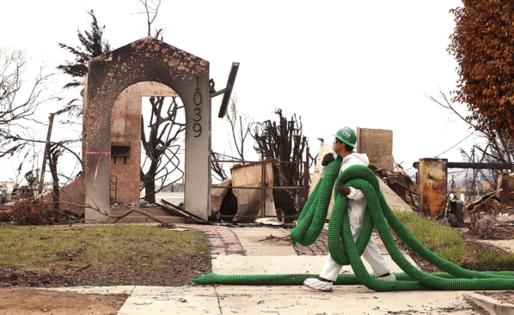California fire survivors to get up to $350,000 for personal property without itemized list under new state law
Published in News & Features
LOS ANGELES — After the January fires that destroyed thousands of residences, victims who lost their clothing, furniture and other possessions faced a daunting task: creating a list of itemized losses to submit to their insurers — typically without records to rely on.
While existing law paid policyholders who suffered total losses as much as $250,000 up front using a formula based on 30% of their dwelling coverage, getting additional money could be overwhelming for victims already dealing with one of the most catastrophic events anyone can suffer.
Now, under a bill signed by Gov. Gavin Newsom, fire victims whose residences burned down can get 60% of their personal property coverage up to $350,000 without first submitting what is euphemistically called "The List." The law also extends the time for filing itemized claims to at least 100 days, up from just two months.
“While it’s been nine months since these firestorms struck Los Angeles, the destruction and devastation left behind is still fresh for thousands of survivors and remains a constant reminder that we have more to do to support our fellow Californians,” Newsom said in a statement, which accompanied his signature on a bipartisan package of fire-related legislation that included the itemization bill.
The legislation, Senate Bill 495, was backed by Insurance Commissioner Ricardo Lara and authored by Sen. Ben Allen (D-Pacific Palisades), whose district includes the Palisades fire zone. It originally called for policyholders suffering total losses to get 100% of their personal property coverage limits up front, but it was opposed by the insurance industry and amended.
The new legislation, like the prior law, only applies in situations where a state of emergency has been declared, which typically occurs after a catastrophic fire. It goes into effect in January.
“The recent L.A. fires exposed difficult inefficiencies in our insurance system that unnecessarily delay the urgently needed financial support survivors are justly due,” Allen said in a statement.
Newsom also signed Senate Bill 429 funding the nation’s first public wildfire catastrophe model, which will be a benchmark for proprietary computer models insurance companies are now using to simulate the damage and potential losses from wildfires and other big disasters.
Under Proposition 103, which regulates the state’s home insurance market, insurers have had to set their premium rates based on historic fire losses. However, there is a growing consensus that climate change has heightened wildfire risks, as evidenced by a growing number of catastrophic blazes California has suffered over the last decade.
Last year, Lara enacted regulations that allow for the private computer models to be used in rate setting, but required that steps be taken to develop a public model since the programs insurers use employ propriety algorithms and data that limit knowledge of how they work.
In May, a task force led by Cal Poly Humboldt recommended that the state fund a research and educational center that would start work on the model and develop a multi-year plan to implement it. SB 429, authored by Sen. Dave Cortese (D-San Jose), creates an insurance department fund to carry it out.
Wary of the proprietary nature of insurer models, which are being used nationwide to simulate various disasters, consumer groups had called for a California public model. Only Florida has developed one, and that is for hurricanes.
“By grounding these models in publicly available data and subjecting them to public scrutiny, policymakers can better protect consumers and promote equitable outcomes in the insurance industry,” said Mekedas Belayneh, a climate policy advocate with Public Citizen, a Washington-based advocacy group.
“Climate change is already reshaping where and how people live. The question is whether the tools used to manage that risk will serve the public interest or the narrow interests of insurance companies. California’s experiment with a public catastrophe model may be the first real test,” she added.
©2025 Los Angeles Times. Visit at latimes.com. Distributed by Tribune Content Agency, LLC.







Comments